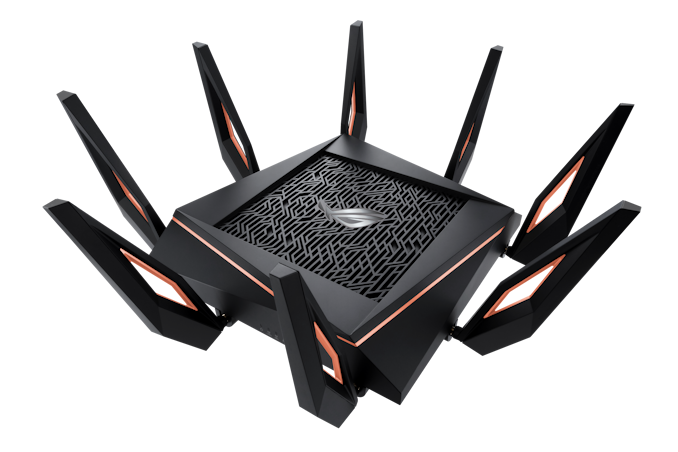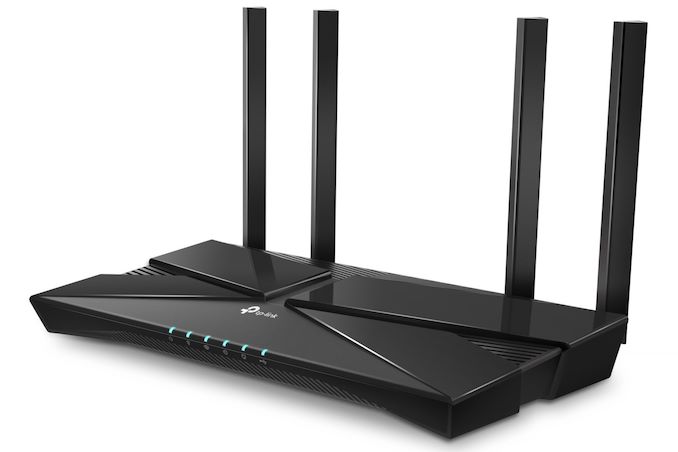AT 101: Wi-Fi 6 And Why You Want It
by Brett Howse on February 12, 2020 8:00 AM EST
Over the last generation of computing, there has been an explosion of devices that no longer have or need the capability of connecting to a hard-wired Ethernet connection, and that trend shows no intention of slowing down. When Personal Computers first started to utilize wireless Network Interface Cards (NICs) they would almost always be the sole device on the network. Fast forward to today, and practically every home has multiple devices, if not dozens, where the devices communicate using radio waves, either over a cellular connection, or over a home wireless network featuring Wi-Fi.
In the PC space, which is the focus of this article, cellular connectivity certainly exists, but almost exclusively in niche roles. While there are advantages to offering directly cellular connection on the PC, the extra recurring cost, especially in North America, means that most laptop owners will use Wi-Fi for network communication.
The term Wi-Fi is something that is omnipresent today, but if based on the Wi-Fi Alliance and adoption of IEEE 802.11 standards for local area networking over wireless. Although the Wi-Fi Alliance has recently renamed their standards, Wi-Fi has in the past been named directly based on the 802.11 standards as follows:
| Wi-Fi Names and Performance | ||||||
| Naming | Peak Performance | |||||
| Branding | IEEE Standard |
1x1 Configuration |
2x2 Configuration |
3x3 Configuration |
||
| Wi-Fi 4 Channel Width 20/40 MHz |
802.11n | 150 Mbps | 300 Mbps | 450 Mbps | ||
| Wi-Fi 5 Channel Width 20/40/80 MHz Optional 160 MHz |
802.11ac | 433 Mbps 867 Mbps |
867 Mbps 1.69 Gbps |
1.27 Gbps 2.54 Gbps |
||
| Wi-Fi 6 Channel Width 20/40/80/160 MHz |
802.11ax | 1201 Mbps | 2.4Gbps | 3.6 Gbps | ||
In an effort to simplify branding, the latest three standards of 802.11n, 802.11ac, and 802.11ax have been rebranded to Wi-Fi 4, Wi-Fi 5, and Wi-Fi 6, respectively. In the long term, the new branding should be much easier for most people to grasp, since larger means newer, although we’ve already got some confusion with Wi-Fi 6E – the 6GHz band addition for Wi-Fi 6 – so we shall see how that goes.
 One of the many Wi-Fi 6 routers announced at CES 2019 - TPLink AX1800
One of the many Wi-Fi 6 routers announced at CES 2019 - TPLink AX1800
Today, most homes should have at least Wi-Fi 4, or what used to be 802.11n. After all, this standard came along in 2009. Many will even have Wi-Fi 5, or 802.11ac, which offers some speed upgrades and a few optional extra features to help with scaling. Wi-Fi 6, or 802.11ax, is a very new standard, and until the end of 2019 there were not even that many devices which could connect over it. So, what is the point of this new standard, and do you really need to upgrade your home network?
This article intends to help answer those questions, as well as show how we at AnandTech are transitioning to Wi-Fi 6 for future reviews.











149 Comments
View All Comments
Mccaula718 - Wednesday, February 12, 2020 - link
Why is the WAN port only 1 Gbps?5080 - Wednesday, February 12, 2020 - link
You can always combine a WAN and LAN port into dual WAN to double the throughput. I have an ASUS RT-AX88U connected to an ARRIS SB8200 with Link Aggregation to take advantage of a 1.2Gbps internet connection.Makaveli - Wednesday, February 12, 2020 - link
Sounds like you are on a 1Gbps cable connection why bother with Link Aggregation?do you actually see the slight over provision on the connection?
deil - Wednesday, February 12, 2020 - link
at my place you can get either from 250/50 Mb/s to 1000/50 Mb/s from anyone that is quite cheap or 3000/500 from one for insane price (~20x more).I am planning for now to use that for both reliability of the uplink (I know ISP's use different nodes when they leave my place) and faster bandwidth (I have fiber to my place and cat 6 (5GB/s) internally.
5080 - Wednesday, February 12, 2020 - link
It peaks at about 1.1Gbps on LAG and 0.85Gbps on one.Dug - Wednesday, February 12, 2020 - link
1Gbs outside may actually be 1Gbs. Inside 1Gbs isn't 1Gbs because of overhead when you have multiple connections. So with aggregation you can benefit multiple connections going outside.azfacea - Thursday, February 13, 2020 - link
this is getting really ridiculous. wired lan is going from "slower" than wifi to "much slower" than wifi. If aliens came down to earth i am not sure what they would think of this lunacy.zshift - Thursday, February 13, 2020 - link
This isn't the case. 2.5Gbps and 10Gbps Ethernet has been out for a while now, it's just not propogating to consumer hardware because it isn't needed in most scenarios. Ethernet can maintain these high data rates over very long distances. This article showed that even wifi 6 across a few rooms drops to below 500Mbps. Higher wifi speeds are needed in order to compete with Ethernet over a long distance, but it's still far more stable (though not easier) to drop Ethernet throughout your place to get near 1Gbps with older routers.RadiclDreamer - Friday, February 14, 2020 - link
10gb, 25gb, 40gb and 100gb are commonplace in the business space, they just havent filtered down to consumers due to lack of demand.Keep in mind also that wifi is simplex (or half duplex) meaning that it can only send or receive but not both at the same time. You also have a lot of overhead on wifi that leads to these numbers not being as good in practice as you might think. Take a normal AC router for example, and lets say you are connected at 867mbps, thats for the entire link, not just the payload. You have WPA2 overhead, errors, retransmitted frames, interference with your neighbors/other devices, TCP/IP overhead (which is present on ethernet also) to contend with and you are going at 1/2 duplex. All of this together means that you are going to actually see about a 400mbps connection for payload.
This is not to snub wifi, its getting very good very fast. But to say that it even comes close to competing with a hardwired connection is just not understanding the technology and whats out there.
Makaveli - Friday, February 14, 2020 - link
Wifi being half duplex only applies to everything Pre Wifi 6 (AX).AX is full duplex.